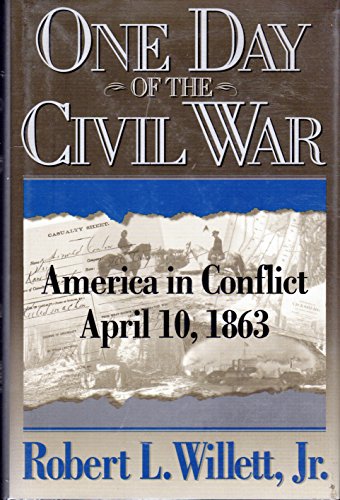Synopsis
Focuses on April 10, 1863 as a microcosm of American life during the Civil War, detailing battles, train raids, military blunders, illnesses, boredom, homesickness, and courage
Reviews
On April 10, 1863, the American Civil War was half over. In this absorbing work, Civil War scholar Willett surveys the conflict on that day, on land from the nation's capital to California, and along the coast, on inland rivers and lakes and at sea. In the East, the two great armies in Virginia were still in winter camps, waiting for better weather to resume operations. So were the armies in Tennessee, although cavalry raids against Union rail lines were in progress on April 10, which also saw an attack on the Union garrison at Franklin, Tenn. Ulysses S. Grant's army was struggling through swamps to gain a foothold below Vicksburg, while minor operations were taking place in several states. Making judicious use of both published and unpublished primary sources, the author includes numerous quotations from officers and men of both sides to show how they felt, what they were doing and what happened on the fronts on April 10. When needed, Willett includes background to place in context the events of the day. One appendix cites the names of the 271 men killed, wounded and captured on April 10. Another lists all 135 hospital deaths that occurred in the Union army. At the end of each chapter, Willett lists the individuals introduced therein and their subsequent fates. This is a cleverly conceived and consistently engrossing look at the Civil War, marred only by its lack of coverage of civilians?their struggles, hopes and work to support the boys in blue and gray. Maps and photos.
Copyright 1996 Reed Business Information, Inc.
It is regrettable that Civil War photographs could not be large and glossy color prints, like the pictures in the Day in the Life of national portrait series--but this book leaves very little else to be regretted. It portrays a nation at war on a day when relatively little happened--no major battles, no deaths of significant people, etc. Yet minor battles and the constant scourge of camp diseases sent several hundred mostly young men to premature graves, which made it a vastly significant day in their lives. Willett surveys activities at every level from that of presidents to that of privates, and in settings including military camps and battlefields, transportation on the rails and at sea, and the home front, where the Confederacy's situation was already parlous. A useful work that saliently adduces the human dimensions of the Civil War. Roland Green
"About this title" may belong to another edition of this title.
